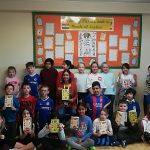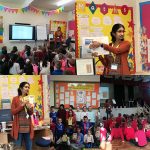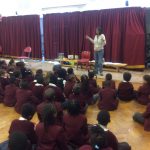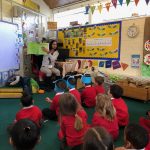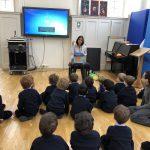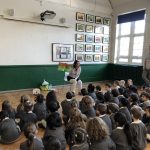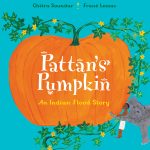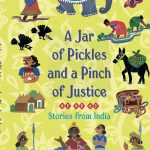As a child in the21st century, there is so much to worry about. From not being able to play outside to dangers on the Internet. They’re hardly left alone and adventures from books in the 70s seem like another world. While some children are able to talk about their fears, many do not have the language or the emotional confidence to voice their anxieties.
There is not a lot of time to sit down and listen, to ourselves, our inner voices and our children’s unspoken fears. Our lives are full of commute, routines, school work and social media. How do we then settle down quietly to talk about such anxieties? Will it even work if you asked a child, if he/she is afraid of something? This is where books come in. Reading books that touch upon anxieties within a story can often help a child reflect on their own anxieties. They might even mention if they had the same question. They might come forward with something they had worried about.
NHS advice says while younger children often have separation anxieties that will slowly go away when they grow older and go to nurseries or sleepovers, other anxieties especially social ones start to manifest. Many anxieties are not serious enough to see the doctor about and can be dealt with one important medication all parents hopefully have access to – books.
A story for a child is never just a story even when it’s full of fun and adventure or fart and poo. Look closely and you will see the gateway into themes that a parent can pull into a discussion.
 When I wrote You’re Safe With Me, at first, my only real goal was to reassure the animals in the forest about the thunderstorm. I approached it as a storyteller first and then as a poet. When the book was written and beautifully illustrated by Poonam Mistry, and published, it created wonderful responses from children. I’ve discussed their fears about natural disasters and they have been able to tell me that they feel reassured after reading the book. Read one of my earlier posts about how children can deal with the fear here.
When I wrote You’re Safe With Me, at first, my only real goal was to reassure the animals in the forest about the thunderstorm. I approached it as a storyteller first and then as a poet. When the book was written and beautifully illustrated by Poonam Mistry, and published, it created wonderful responses from children. I’ve discussed their fears about natural disasters and they have been able to tell me that they feel reassured after reading the book. Read one of my earlier posts about how children can deal with the fear here.
So when I started writing You’re Snug with Me, a few things were in the back of my mind. The two polar bear cubs born in the snow den, are going to encounter a fierce natural environment they have to cope with. They have never left the warmth of their mother’s embrace for almost nine months, and then when they find this vast region of ice and snow, would they worry?
As a child, growing up must be exciting and worrying in equal measures. What if I sit next to a boy or girl I’m not friends with? What if my new teacher is stricter than the one I had now? What if my new school is too far away? They’ll be picking up on the conversations they overhear in school or at home about teachers, about other children in their class and wonder how it would affect them.
The bear cubs too have similar questions. Who will they meet when they get out of the den? Will Mama leave them alone or would she stay with them? How fierce are the snowstorms and drifts? And more importantly, will all this ice stay frozen?
Of course, at the outset, the story is about polar bear cubs. But then if you use the text to steer the conversation about similar fears children might have – will the giraffe go extinct before my next birthday because I’d like to go and see them in the zoo? Will there be more floods and earthquakes as I grow up and what can I do to stop it?
Then go further – ask them what other things might worry them? Especially if a child is going to the nursery for the first time or transitioning from nursery to reception, talk to them about embarking on that adventure – exciting as well as scary as it might be.
Books are wonderful resources to discuss children’s anxieties. Parents can gently ease into these. Also there is a wide array of books available that either focus or touch topics on the periphery – as a parent you know when you want a big dose of something and when just a pinch is more than enough.
All my books come with activities too – from colouring to solving word puzzles, go further than the book. The more children interact with a subject matter, the deeper their introspection gets. Put your listening hat on and jump into the joys of a book.















